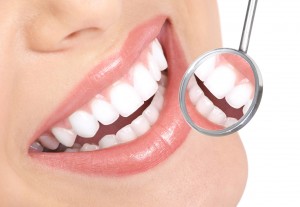
When the time comes for a new smile, there are loads of procedures available to repair whatever condition your smile is in. All you need to get started is a dental appointment. Once you’re there, you can discuss the various dental procedures available to you depending on your particular case. Here are the common cosmetic procedures and how they can improve your smile.
Teeth whitening. Everyone’s teeth get discolored or stained from time to time. Teeth whitening, or bleaching, can be done in a dentist’s office or at home with a system dispensed by the dentist.
Bonding. Life is full of accidental mishaps, sometimes those mishaps mess up our teeth. Bonding can improve the appearance of teeth that are chipped, broken, cracked, stained, or gapped by bonding tooth-colored materials to the tooth surface, making them nearly impossible to distinguish.
Veneers. Another variation of the bonding technique are veneers. These are thin, custom-made porcelain shells that cover the front of the teeth to disguise discoloration or imperfections.
Tooth reshaping. This procedure changes the actual look of your teeth by modifying or removing enamel, completely changing the look of your tooth. Tooth reshaping (also known as dental contouring) is often combined with bonding.
Crown lengthening. Sometimes it isn’t the teeth that are the issue, it’s the gums. This “gummy” smile or an uneven gum line can be fixed by removing excess gum tissue, exposing more of the tooth’s crown to give the appearance of longer teeth.
Smile makeovers. Deciding your smile needs an entire makeover involves a comprehensive assessment of the overall appearance of the teeth and smile. Typically, several cosmetic dentistry procedures are required to overhaul the look of a patient’s smile, but the results will be staggering.
Visit Dr. Kirtley today and schedule an appointment to maintain a healthy smile. Call 317-841-1111 or www.smilesbygeorge.com.
Dr. George Kirtley proudly serves Indianapolis and all surrounding areas.



